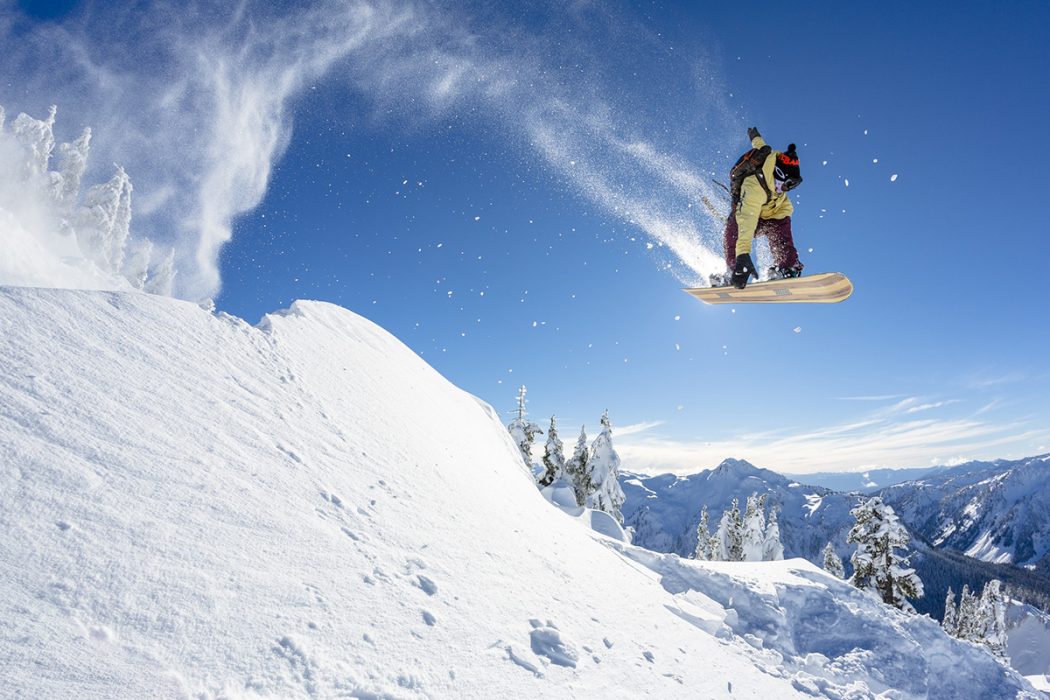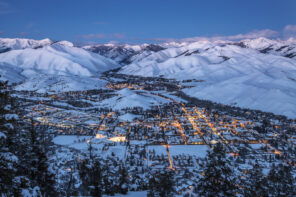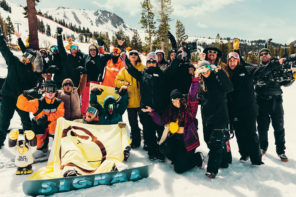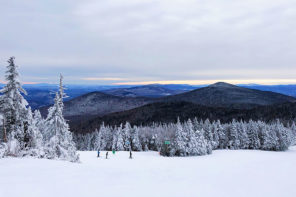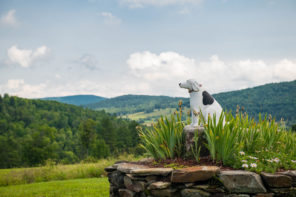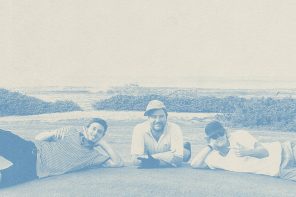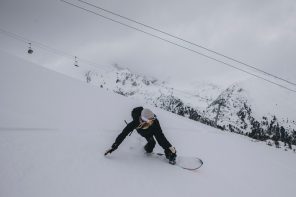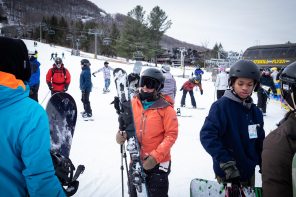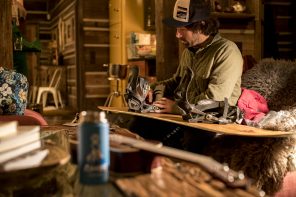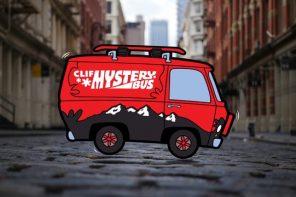When I first set out to do a story on snowboarding at Stratton Mountain, I had zero idea what I was doing or where to start. Not only had I never been to Stratton, but my experience snowboarding—and the world of snow overall—was limited to living in Wisconsin for a year as a kid and randomly watching Familia 2 at a house party during college in Florida. Honestly, up until the point when I met Russell Winfield, I was the perfect candidate to never write anything about snowboarding, ever.
Fast forward to this past December, and we begin putting together our first ever Winter Issue. Through a conversation with good friend and advisor, Mike Marett, I met early Strattonite, Jay Fusco, who immediately introduced me to Russell—stating that if there’s anyone who has good stories from snowboarding at Stratton and when the sport first started popping off, it’s him.
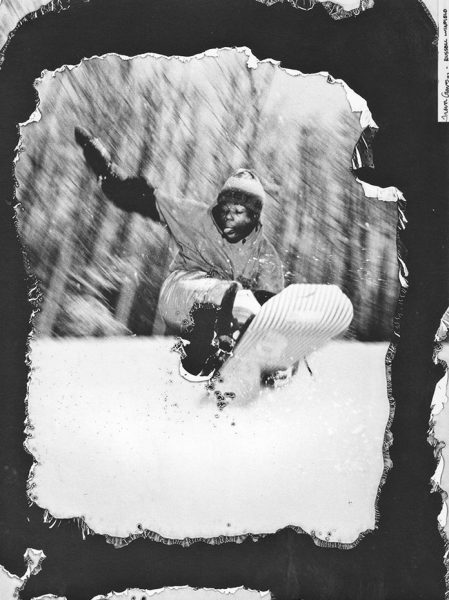
Russell at Stratton in 1991. Photo: Trevor Graves
After making a brief detour and working with Russell to put together a feature on Alex Dymond’s Snow Beach, I finally got the man on the mic to tell us about his rise as a pro snowboarder, days (and nights) a Stratton, a faint hiatus from the sport and his current involvement in bringing snowboarding back to its roots.
I read in an old interview with Transworld that you were first introduced to snowboarding on a golf course in New York. Is that really how it went down?
Yeah man. I was up in Rye and we used go sledding at a country club called Apawamis. Then I found a snowboard in a skate shop and I started bringing that thing out there. There was a few of us that had boards, it was super fun. There were mini cliffs and other little features all over the place. My favorite was this sand trap that had an elevated tee box next to it. You could drop in off the tee box and do backside airs back into the tranny of the sand trap. It was epic!
Can you run me through that timeline from when you first got into snowboarding to when you got your first sponsor and were competing in national events?
Well it all started on that golf course. I got pretty good—I mean I felt I had control of the board and could jump. So then I went up to Stratton with friends and decided I wanted to get my certification. The problem was I had only ridden in powder with fins. I took my Burton Elite up there, fins and all, and couldn’t even turn. Needless to say I didn’t get my certification.
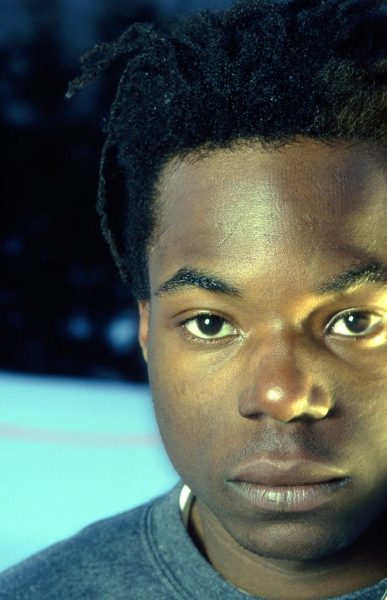
A young Russell. Photo: Trevor Graves
So the people giving out the certs told me that I should take the fins off, which I did, and then was able to get my certification. It’s funny looking back—they probably saw me coming from miles away and were just messing with me! Thanks Suzi Rueck and Mark Heingartner. Once I took the fins off and got my certification, I hooked up with the Stratton locals and joined the Allergo team. We were the Stratton snowboard team before SMS would allow snowboarders. I would go to school in the city a few days during the week and spend the rest of my time up in Stratton shredding and having fun with the homies.
I did well in the local green mountain series which lead to different little shop sponsors, like Sunset Bay. I sent pics into Mistral, which made boards, and then they started hooking me up. I ended up making it to Nationals the first year I competed, out in So Cal. It was cool and I had met people from across the country like it was summer camp. It was super fun.
How were most guys marketing themselves back then? Was there a lot of pressure to compete or were guys already starting to focus solely on filming and putting out parts?
As far as marketing yourself goes, it was way different back then. I think as snowboarders, we marketed ourselves to the industry and then they would pick who they wanted to run pictures of. We used to have night shoots with Trevor Graves at the Stratton Pipe. Wow, that was so fun! Me, Brushie K. Swierz, Doug Byrnes, Trica Byrnes… even little Ross Powers would show up every once in awhile.
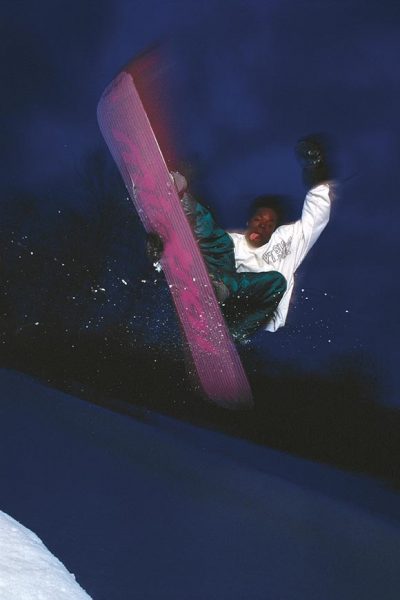
One of those night shoots back in 1991. Photo: Trevor Graves
As an AM, you had to compete in order the measure yourself against others. All disciplines: slalom, GS and halfpipe. I remember telling my coach, “Once I turn pro, I’m never racing again.” Once you got to be pro, you could just do the halfpipe… but we quickly turned to filming more then competing.
Who were you looking up to in snowboarding during your younger years?
Well for me, snowboarding was and still is all about style. I would have to say that Jeff Brushie was who I looked to the most for style. There was a kinship with him. Also, I looked heavily toward Chris Roach. He had that smooth Cali steez and still does. The way they both approached a feature was like nobody else. I tried to mix Brushie’s explosiveness and Roach’s buttery style to form my own.
What were your most memorable achievements from that period of competing as a pro and on an all-star roster for Ride?
Honestly I don’t think there was much achievement in competing when I was with Ride. It was more about the party and the free riding. We were real into being super progressive, pushing the sport. There weren’t slope style contests back then so we really didn’t have a forum for our art.
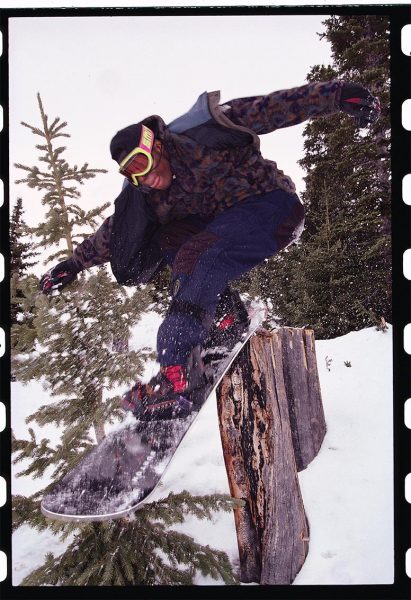
Steezy tail bonk. Photo: Jon Foster
What about your achievements outside of the contest scene… were there any specific tricks, video sections or personal targets that you’re psyched on hitting during your career?
I think my first video part in Mack Dawg’s Pokahontas was probably my favorite. I did a lot of tricks that had never been filmed and I was trying to be as innovative as possible. The Ride movie, Toy Soldiers, was good for me too. Of course, getting my first pro model was a rite of passage as well.
Your Fat Albert pro model was rumored to have sold out when it was released in 1995, but I also heard that Ride received a cease and desist so they had to stop its production. Were you the one that originally landed on that graphic, and how did that board’s release actually play out?
Well as far as that board goes, I picked the graphic. The character’s name is Russell, so I figured what better representation of myself? Ride got in trouble for that and a few other graphics that year. I also had a second graphic because were doing things like the skate industry, where there were multiple graphics in a year.
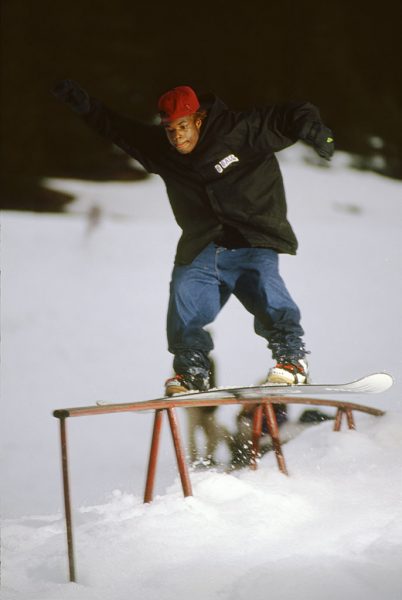
Russell at Mt. Hood back in ’93. Photo: Trevor Graves
The second one was the Yokohama Giants’ logo. It was this wired little character that looked like it had an YG on its head. When the Japanese distributor saw that, they weren’t too stoked, so we sent a lot of the Russell graphics to Japan and the YG one over here. I’m pretty sure that board sold really well, too.
If you look around at a lot of the top-earning athletes in snow/skate/surf, most of them are living unfathomably lavish lifestyles these days—houses, cars, starting companies on a whim. In contrast, what was it like being a well-paid snowboarder back in 90s when there wasn’t social media and major brands buying into action sports? Were snowboarders still raking it in and what were they spending it on?
There were people like Brushie who really raked it in and bought houses and stuff, but personally I just spent it like a 20 year old kid who wanted to just have fun. Not even Brushie made Shaun White money at that time, but he did do well.
I was basically partying like the lead singer of an 80’s hair band without the hair or the spandex.
What was the craziest item you ever spent money on when the paychecks were flowing in?
There are two moments that I can recall. One was right when we started Ride, I went to a car audio place in Pacific Beach and bought a cell phone. People today might think that’s not a big deal but this was in like 1993. It was small and super dope. The problem was that I got super wasted and left it in a cab or something soon after getting it.
Then when I left Ride and cashed out my stock, I was in Boulder, Colorado with my buddies. We decided that we wanted to go to some frat parties so I went to the Ralph Lauren store and bought everybody full kits. I was the only one who could have the pink pants though… tailored and out the door within hours! These weren’t real lavish purchases… it was more about the swagability factor!
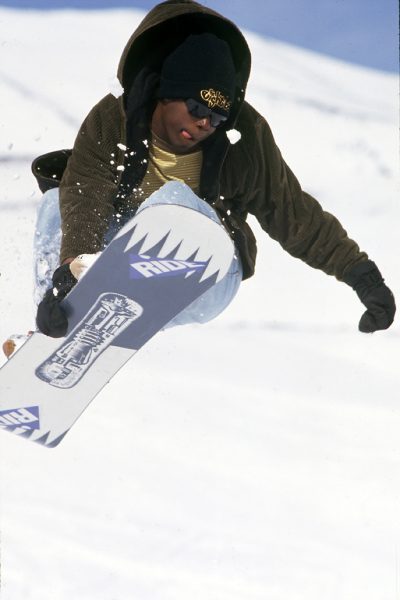
Russell at Mt. Hood, 1993. Photo: Trevor Graves
You went through a phase of “missing in action” that a lot of snowboarding media attributed to your wild success and bouts with partying that stemmed from that success. What were you up to during your hiatus from the snowboarding limelight?
I was basically partying like the lead singer of an 80’s hair band without the hair or the spandex. Got in trouble a few times and didn’t really enjoy the fall from grace. Thankfully I had a decent education and went out and got a job.
I know you’re working on a vlog series + busy being a dad. Besides supervising ten child sleepovers per month, what have you been up to these days?
I’m staying creative. I have a little agency where I’m designing and building websites. I also work with a few brands in snowboarding, doing branding and design work and being the old guy on the squad. It’s good man, I’m happy where I’m at now… it took a minute but it’s good. As far as the web series goes, I just think snowboarding always looked up to its big brothers in skating and surfing, and now it has gotten away from that.
I just want to give back to the culture that gave me so much. You know you can sit around and complain about why something is crappy, or you can get up and do something to change it. I choose to get up and do my part to change it! The series is going to be about the soul of snowboarding why we do it. Not for the money or the fame but for the freedom and creativity of it.
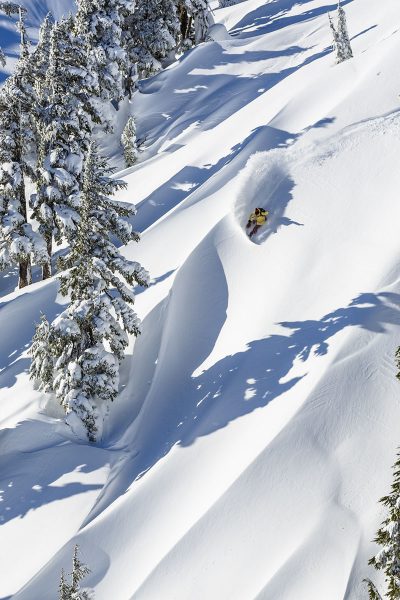
Russell at Mt. Baker, laying into 2017. Photo: Brad Andrew
Anyone you want to shout out from the industry or just friends/fam that has shown love and support for you through-and-through?
Yeah—I would like to give a shout to Holden Outerwear. In particular Mikey Leblanc. He is one of my best friends and has had my back through some tough times. Terje also has been there, Jake Blatner and Scotty Kaeting over at Nike, and last but not least, Jay Fusco, who was like my little brother since we were barely teenagers! These guys are still in my corner and I love and appreciate them for it. Also Offshore Snow Shapes, Mount Baker Snowboard Shop and Modest Eyewear!
Follow Russell via his Instagram, @misterwinfield, and check out more from snowboarding’s golden era via our feature on Snow Beach or interview with Todd Kohlman on Craig’s. Extra large thanks to Alex Dymond, Trevor Graves, Jon Foster and Brad Andrew for helping bring this interview to life with some incredible imagery. Thank you Russell for making the time.

